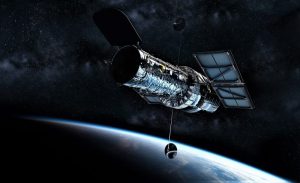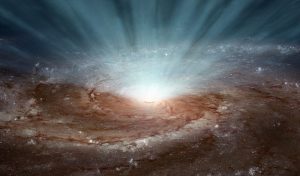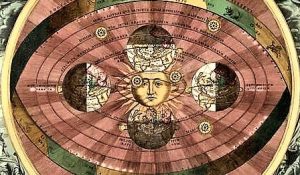Observable universe
The distant universe, as seen through the plane of the Milky Way, is made up of thousands of stars and galaxies, as well as opaque gas and dust, going back as far as we can see. But we know that we are not seeing everything in that universe. It is also surrounded by stars, by a series of clusters, filaments and trillions and trillions of possibilities of rocky planets, liquid water and life. But, in reality, we do not know exactly to what extent the observable universe advances and how much of it has not yet been revealed or discovered.

Related topics
Universe Expansion
What is the observable universe?
The observable universe is everything that we can observe through technology about our universe; it is the part of the cosmos in which its light has managed to have time to reach where we are.
Size of the observable universe
The size of the visible or observable universe encompasses everything that man has discovered and known, as well as matter, energy, space and time. It is believed that the universe is so large that we cannot even have a rough idea of its size. All matter within the cosmos is a small portion of the universe, which in turn is an immense space that is considered practically void.
Although countless amounts of studies have been done, the exact size of the observable universe is not known, it is thought that it could even become infinite, although scientists think this is unlikely. Nor is the exact shape of the universe known, as it continues to expand over time.
If there is a limit to the universe visible from the earth that is 46.5 billion light years in all possible directions, this amount is approximately 93 billion light years. It is considered that after the Big Bang, the universe could have had a rapid expansion, so much that the light has not yet reached us, and for this reason is that it cannot be fully observed.
Limits
The furthest galaxies are believed to be approximately 35-37 billion light years from us, and the universe is about 46 billion light years away, leaving a margin of about 10 billion light years from the last galaxies to the edge of the observable universe.
More distant objects
The farthest objects that have been discovered in the universe are called quasars. Every year a new one is discovered with a greater distance than the previous one. They are the shiniest objects that are known and help in researching the size and age of the universe. When the light comes from a quasar, it takes a very long time to reach us and for this reason are the furthest from observing.
Quasars have the ability to radiate approximately one hundred thousand times more light than any other normal star in the galaxy, are the most powerful energy sources known and can be observed at enormous distances. They are so bright that they are believed to have the ability to dull the galaxies that contain them.
Many quasars are discovered after a long time of observation using large telescopes such as the Hale at the Palomar Observatory in California; the Mayall in Arizona; the Keck in Hawaii; NASA’s Hubble and Chandra space telescopes; the CSIRO Parkes radio telescope in Australia; and the radio telescopes at the National Radio Astronomy Observatory.
How it differs from the total universe?
The observable universe is only the small portion of the universe which we are able to detect from the total universe and constitutes a part of the total universe in which it apparently possesses geometrically flat space and time. The total universe is the totality of space and time which includes all possible forms of matter, energy, impulses, the different laws and physical constants which govern this universe. So, the total universe refers to the cosmos, the world and nature.
What is beyond the observable universe?
Despite its rarity, astronomers think that space outside the observable universe could be an infinite extension of what we see in the cosmos around us, distributed more or less in the same way as in the observable universe. With the observable universe the infinite makes sense and tells us that beyond the observable universe, not only will more planets and stars and other forms of material be found, but everything possible will be found.
Another theory tells us that “dark flow” can be found. In 2008, astronomers discovered something very strange and unexpected: galactic clusters were flowing in the same direction at an immense speed, more than two million miles per hour. The possible cause was designated to massive structures outside the observable universe that exert gravitational influence. As for the structures themselves, they could be literally anything: huge accumulations of matter and energy or even strange deformations in space-time that are channeling gravitational forces from other universes.
How to cite this article?
Briceño V., Gabriela. (2019). Observable universe. Recovered on 23 February, 2024, de Euston96: https://www.euston96.com/en/observable-universe/









